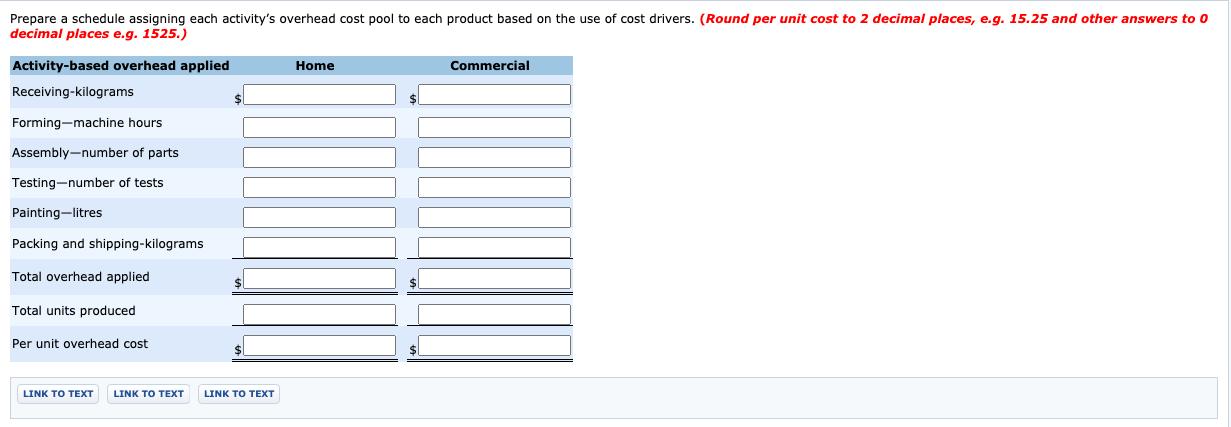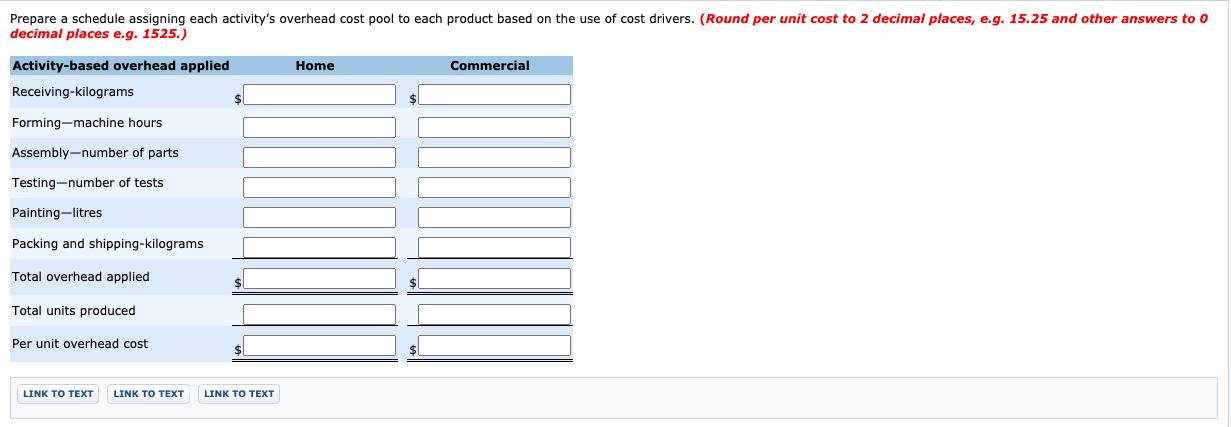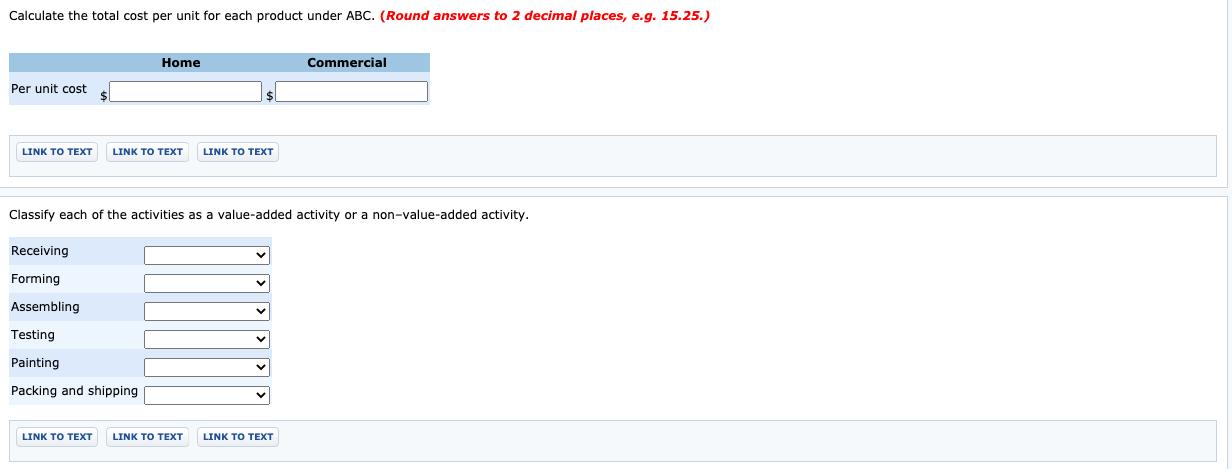Answered step by step
Verified Expert Solution
Question
1 Approved Answer
FireOut, Inc. manufactures steel cylinders and nozzles for two models of fire extinguishers: (1) a home fire extinguisher and (2) a commercial fire extinguisher.






FireOut, Inc. manufactures steel cylinders and nozzles for two models of fire extinguishers: (1) a home fire extinguisher and (2) a commercial fire extinguisher. The home model is a high-volume (54,000 units), half-litre cylinder that holds 2.50 kilograms of multi-purpose dry chemical at 480 PSI (pounds per square inch). The commercial model is a low-volume (10,200 units), two-litre cylinder that holds 10 kilograms of multi-purpose dry chemical at 390 PSI. Both products require 1.50 hours of direct labour for completion. Therefore, total annual direct labour hours are 96,300 or [1.50 hrs. x (54,000 + 10,200)]. Expected annual manufacturing overhead is $1,502,280. Thus, the predetermined overhead rate is $15.60 or ($1,502,280 +96,300) per direct labour hour. The direct materials cost per unit is $18.78 for the home model and $26.20 for the commercial model. The direct labour cost is $20.00 per unit for both the home and the commercial models. The company s managers identified six activity cost pools and related cost drivers, and accumulated overhead by cost pool as follows: Activity Cost Pools Cost Drivers Receiving Kilograms Machine hours Forming Assembling Number of parts Number of tests Litres Testing Painting Packing and shipping Kilograms Estimated Expected Use Overhead of Cost Drivers $70,610 151,200 391,100 51,700 54,110 783,560 $1,502,280 Expected Use of Drivers by Product Home Commercial 215,000 335,200 36,500 28,000 219,000 166,000 26,900 16,000 6,520 4,220 335,200 215,000 120,200 8,500 53,000 10,900 2,300 120,200 Under traditional product costing, calculate the total unit cost of each product. Prepare a simple comparative schedule of the individual costs by product. (Round answers to 2 decimal places, e.g. 15.25.) Manufacturing Costs Direct materials Direct labour Overhead Total unit cost $ Home Model LINK TO TEXT LINK TO TEXT LINK TO TEXT Products Commercial Model Under ABC, prepare a schedule showing the calculations of the activity-based overhead rates (per cost driver). (Round rate per cost driver to 2 decimal places, e.g. 15.25 and other answers to 0 decimal places e.g. 1525.) Cost Pool Receiving Forming Assembly Testing Painting Packing & shipping LINK TO TEXT $ $ $ $ $ $ $ LINK TO TEXT Est. MOH LINK TO TEXT Est. Usage $ Rate Cost Drivers per kilogram per machine hr per part per test per litre per kilogram Prepare a schedule assigning each activity s overhead cost pool to each product based on the use of cost drivers. (Round per unit cost to 2 decimal places, e.g. 15.25 and other answers to 0 decimal places e.g. 1525.) Activity-based overhead applied Receiving-kilograms Forming-machine hours Assembly-number of parts Testing-number of tests Painting-litres Packing and shipping-kilograms Total overhead applied Total units produced Per unit overhead cost $ LINK TO TEXT LINK TO TEXT LINK TO TEXT Home Commercial Prepare a schedule assigning each activity s overhead cost pool to each product based on the use of cost drivers. (Round per unit cost to 2 decimal places, e.g. 15.25 and other answers to 0 decimal places e.g. 1525.) Activity-based overhead applied Receiving-kilograms Forming-machine hours Assembly-number of parts Testing-number of tests Painting-litres Packing and shipping-kilograms Total overhead applied Total units produced Per unit overhead cost $ LINK TO TEXT LINK TO TEXT LINK TO TEXT Home Commercial Calculate the total cost per unit for each product under ABC. (Round answers to 2 decimal places, e.g. 15.25.) Per unit cost LINK TO TEXT LINK TO TEXT LINK TO TEXT Home Receiving Forming Assembling Testing Painting Packing and shipping Classify each of the activities as a value-added activity or a non-value-added activity. LINK TO TEXT LINK TO TEXT Commercial LINK TO TEXT
Step by Step Solution
★★★★★
3.45 Rating (152 Votes )
There are 3 Steps involved in it
Step: 1

Get Instant Access to Expert-Tailored Solutions
See step-by-step solutions with expert insights and AI powered tools for academic success
Step: 2

Step: 3

Ace Your Homework with AI
Get the answers you need in no time with our AI-driven, step-by-step assistance
Get Started


